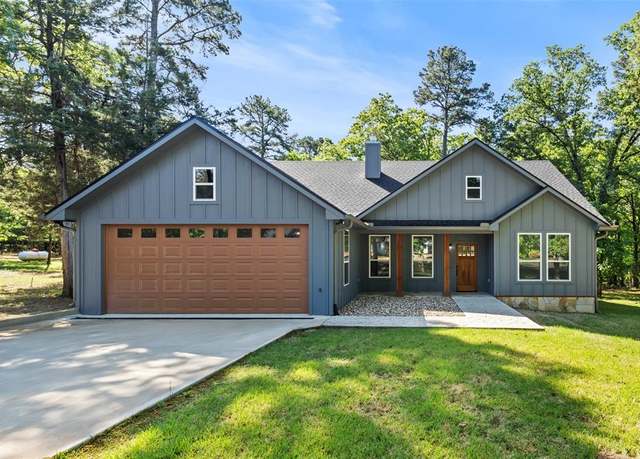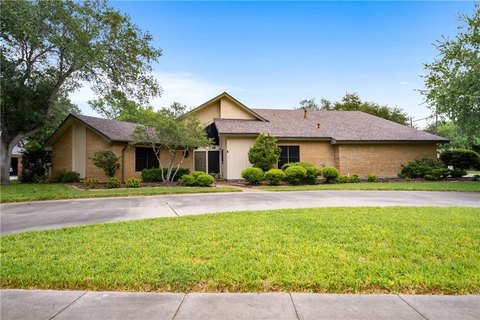Imagine this: Emma and David, a young couple working in tech, decide to move to California. They’ve heard of the dream—a sun-kissed land of golden beaches, rolling hills, and Silicon Valley’s promise of success. As they begin their search for a home, they’re met with a sobering reality: housing prices in San Francisco soar past $1.5 million for even modest properties, and homes in Los Angeles seem far out of reach. But just as they begin to lose hope, they discover a different California—one where homeownership is still possible without spending millions. They stumble upon small towns, remote areas, and suburban corners offering some of the cheapest homes in the state.
While California’s housing market is often synonymous with skyrocketing prices, there are still places where affordability exists. This article explores where to find the cheapest homes in California, provides insights into why these areas remain affordable, and breaks down key statistics to help homebuyers make informed decisions.
California’s Real Estate Landscape: A State of Extremes
California has long been known for its diverse real estate market, characterized by astronomical home prices in major cities like San Francisco, Los Angeles, and San Diego. In fact, according to Zillow, the median home price in California reached approximately $746,000 in 2023, nearly double the national average of $416,100. This disparity is largely due to the high demand in urban centers, limited housing supply, and zoning restrictions.
However, while the coastal and metropolitan areas get the most attention for their sky-high real estate prices, many parts of California remain relatively affordable. These areas are often located inland, away from the coastal allure, or in smaller cities and towns that haven’t yet seen the influx of wealthy homebuyers and tech companies.
Where to Find the Cheapest Homes in California
- Bakersfield
- Median home price: $350,000 (Zillow, 2023)
Bakersfield, located in California’s Central Valley, offers some of the cheapest homes in the state. The city has long been a hub for agriculture and oil production, which has kept the cost of living relatively low. Despite its affordability, Bakersfield has a growing economy, with job opportunities in healthcare, education, and energy.
- Fresno
- Median home price: $365,000 (Zillow, 2023)
Fresno, another Central Valley city, also ranks as one of the most affordable places to buy a home in California. Fresno is the largest city in the region, with a diverse population and a strong agricultural industry. The city’s relatively low home prices, combined with its location as a gateway to Yosemite National Park, make it an attractive option for homebuyers looking for affordable options without sacrificing lifestyle.
- Stockton
- Median home price: $440,000 (Zillow, 2023)
Stockton, located in Northern California, is often overlooked in favor of the Bay Area, but it offers much lower home prices. The city’s housing market suffered during the 2008 financial crisis, leading to an abundance of affordable homes even today. With a growing downtown area and access to the Sacramento-San Joaquin Delta, Stockton provides a balance of affordability and opportunity.
- Merced
- Median home price: $345,000 (Realtor.com, 2023)
Merced is often considered a hidden gem for homebuyers. Located near the foothills of the Sierra Nevada mountains, it is a small but growing city, known for being home to the University of California, Merced. The town is starting to benefit from some spillover effects of Bay Area residents seeking cheaper housing, though its market remains affordable compared to coastal cities.
- Barstow
- Median home price: $225,000 (Zillow, 2023)
Barstow, located in the Mojave Desert along the historic Route 66, is one of the most affordable places to buy a home in California. The city’s isolation, combined with its small size, has kept real estate prices significantly lower than other parts of the state. While Barstow may not offer the same amenities as larger cities, its affordability and proximity to desert recreation areas appeal to budget-conscious homebuyers.
The Factors Keeping Prices Low
While these cities offer some of the cheapest homes in California, a few common factors contribute to their affordability:
- Geographic Location: Many of these affordable areas are located inland, away from the coastal regions that command premium prices. Without ocean views or proximity to major urban centers, the demand for housing in these areas remains lower.
- Economic Profile: Cities like Bakersfield and Fresno rely heavily on agriculture and industry rather than tech or finance, which drives housing costs down. Their economies may not grow as rapidly as tech hubs, but they provide stable employment, keeping housing affordable for middle-class families.
- Population Density: Smaller cities with lower population densities, like Barstow and Merced, typically have fewer housing shortages, allowing supply to meet demand without causing steep price hikes.
- Lesser-Known Areas: Some of these cities simply haven’t attracted the attention of affluent buyers, second-home seekers, or investors. With less competition, home prices remain more accessible to average buyers.
Affordable vs. Desirable: Is Cheaper Always Better?
While affordability is a significant factor for many prospective buyers, it’s essential to weigh the benefits and potential drawbacks of living in California’s cheaper areas. These cities may not offer the same amenities, job opportunities, or infrastructure as more expensive coastal cities. For example:
- Commutes and Transportation: Some affordable cities are far from major employment hubs, which can mean longer commutes or fewer job opportunities within the city.
- Climate and Environment: Cities like Barstow experience extreme heat, while places like Merced and Fresno endure hot, dry summers and foggy winters, which may not appeal to everyone.
- Limited Services: Smaller cities might lack the diversity of services and entertainment options available in bigger metropolitan areas.
Future Trends: Will Affordable Homes in California Remain?
With California’s housing market constantly evolving, many wonder whether these affordable pockets will remain untouched. Several factors could impact home prices in these regions over time:
- Urban Sprawl: As housing prices in the Bay Area and Los Angeles continue to rise, more homebuyers may seek out affordable inland cities, potentially driving prices up in places like Fresno and Merced.
- Infrastructure and Economic Development: Cities that invest in infrastructure, like improved transportation or tech industries, could see rising property values. For instance, the planned High-Speed Rail project may connect cities like Bakersfield and Fresno to the Bay Area, which could raise housing demand in these regions.
- Migration Trends: The ongoing exodus from California’s coastal cities due to high living costs may increase the population in affordable inland areas, gradually pushing home prices upward.
Conclusion:
Finding Your Piece of California
For those like Emma and David, who dream of owning a home in the Golden State without breaking the bank, exploring these lesser-known areas may be the key to achieving that dream. While the cost of living in California can be daunting, the state still offers affordable opportunities in places often overlooked by the masses. By considering cities like Bakersfield, Fresno, and Merced, homebuyers can find their piece of California’s rich and diverse landscape—without sacrificing their financial stability.
you may also read
How Much Do You Lose Selling a House As Is












 Afrikaans
Afrikaans Shqip
Shqip አማርኛ
አማርኛ العربية
العربية Հայերեն
Հայերեն Azərbaycan dili
Azərbaycan dili Euskara
Euskara Беларуская мова
Беларуская мова বাংলা
বাংলা Bosanski
Bosanski Български
Български Català
Català Cebuano
Cebuano Chichewa
Chichewa 简体中文
简体中文 繁體中文
繁體中文 Corsu
Corsu Hrvatski
Hrvatski Čeština
Čeština Dansk
Dansk Nederlands
Nederlands English
English Esperanto
Esperanto Eesti
Eesti Filipino
Filipino Suomi
Suomi Français
Français Frysk
Frysk Galego
Galego ქართული
ქართული Deutsch
Deutsch Ελληνικά
Ελληνικά ગુજરાતી
ગુજરાતી Kreyol ayisyen
Kreyol ayisyen Harshen Hausa
Harshen Hausa Ōlelo Hawaiʻi
Ōlelo Hawaiʻi עִבְרִית
עִבְרִית हिन्दी
हिन्दी Hmong
Hmong Magyar
Magyar Íslenska
Íslenska Igbo
Igbo Bahasa Indonesia
Bahasa Indonesia Gaeilge
Gaeilge Italiano
Italiano 日本語
日本語 Basa Jawa
Basa Jawa ಕನ್ನಡ
ಕನ್ನಡ Қазақ тілі
Қазақ тілі ភាសាខ្មែរ
ភាសាខ្មែរ 한국어
한국어 كوردی
كوردی Кыргызча
Кыргызча ພາສາລາວ
ພາສາລາວ Latin
Latin Latviešu valoda
Latviešu valoda Lietuvių kalba
Lietuvių kalba Lëtzebuergesch
Lëtzebuergesch Македонски јазик
Македонски јазик Malagasy
Malagasy Bahasa Melayu
Bahasa Melayu മലയാളം
മലയാളം Maltese
Maltese Te Reo Māori
Te Reo Māori मराठी
मराठी Монгол
Монгол ဗမာစာ
ဗမာစာ नेपाली
नेपाली Norsk bokmål
Norsk bokmål پښتو
پښتو فارسی
فارسی Polski
Polski Português
Português ਪੰਜਾਬੀ
ਪੰਜਾਬੀ Română
Română Русский
Русский Samoan
Samoan Gàidhlig
Gàidhlig Српски језик
Српски језик Sesotho
Sesotho Shona
Shona سنڌي
سنڌي සිංහල
සිංහල Slovenčina
Slovenčina Slovenščina
Slovenščina Afsoomaali
Afsoomaali Español
Español Basa Sunda
Basa Sunda Kiswahili
Kiswahili Svenska
Svenska Тоҷикӣ
Тоҷикӣ தமிழ்
தமிழ் తెలుగు
తెలుగు ไทย
ไทย Türkçe
Türkçe Українська
Українська اردو
اردو O‘zbekcha
O‘zbekcha Tiếng Việt
Tiếng Việt Cymraeg
Cymraeg isiXhosa
isiXhosa יידיש
יידיש Yorùbá
Yorùbá Zulu
Zulu